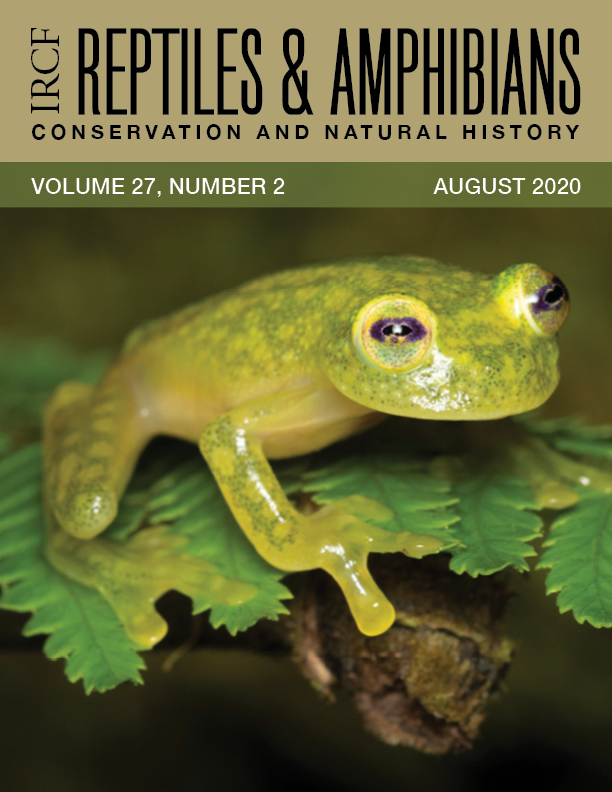An Improved Approach to Measuring Sexual Dimorphism in Snakes: Morphological Variation in the Bahamian Racer (Cubophis vudii vudii)
DOI:
https://doi.org/10.17161/randa.v27i2.14090Abstract
Sexual dimorphism in animals exists in many forms, including overall size difference between the sexes (sexual size dimorphism, SSD) and size and structural differences in body components (sexual body component dimorphism, SBCD). Studies of sexual dimorphism seek to determine whether dimorphic traits result from sexual selection, natural selection, or non-adaptive processes. Characterizing sexual dimorphism depends on identifying an unbiased character for overall body size, which can then be used to assess both SSD and SBCD. Most studies of snakes use snout-vent length (SVL) for this purpose, but SVL may itself be dimorphic. In this study, we examined SSD and SBCD in three island populations of the Bahamian Racer (Cubophis vudii vudii). Discriminant function analysis (DFA) showed that head width (females wider) and tail length (males longer) best discriminated between the sexes, and total length provided the least discrimination. Linear models using total length as the least-biased measure for overall size revealed an absence of SSD, but SBCD existed for head size (width 8.9% greater in females, length similar), trunk length (4.3% longer in females), and tail length (9.8% longer in males). Linear models also revealed differences among island populations for total length (New Providence < Eleuthera = Allen Cay) and head length (Allen Cay < Eleuthera < New Providence), but not head width or tail length. Extent of SBCD varied depending on choice of character to control for overall body size, with total length yielding the most female-biased values, and geometric mean, principal component 1 (PC1) of a principal components analysis, and SVL providing increasingly more male-biased values, respectively. Body condition was statistically similar for the two sexes and three seasons (spring, summer-fall, winter), but the moderate and large effect sizes, respectively, suggest that females were heavier than males, and both sexes were heaviest in spring. Females, which represented 64.9 of all snakes, suffered injuries disproportionately to males (19.7% and 3.1%, respectively), but no differences in sex ratio or frequency of injury existed among the island populations. Collectively, these findings illustrate the utility of using DFA and other approaches (geometric mean, PC1) to identify a relatively unbiased reference character for overall body size and suggest that sexual and natural selection interact to shape the morphology of these snakes.
Downloads
Published
Issue
Section
License
Copyright (c) 2020 Scott Johnson; William K. Hayes

This work is licensed under a Creative Commons Attribution-NonCommercial 4.0 International License.
Copyright is held by the authors. Articles in R&A are made available under a Creative Commons Attribution-NonCommercial 4.0 International license.

